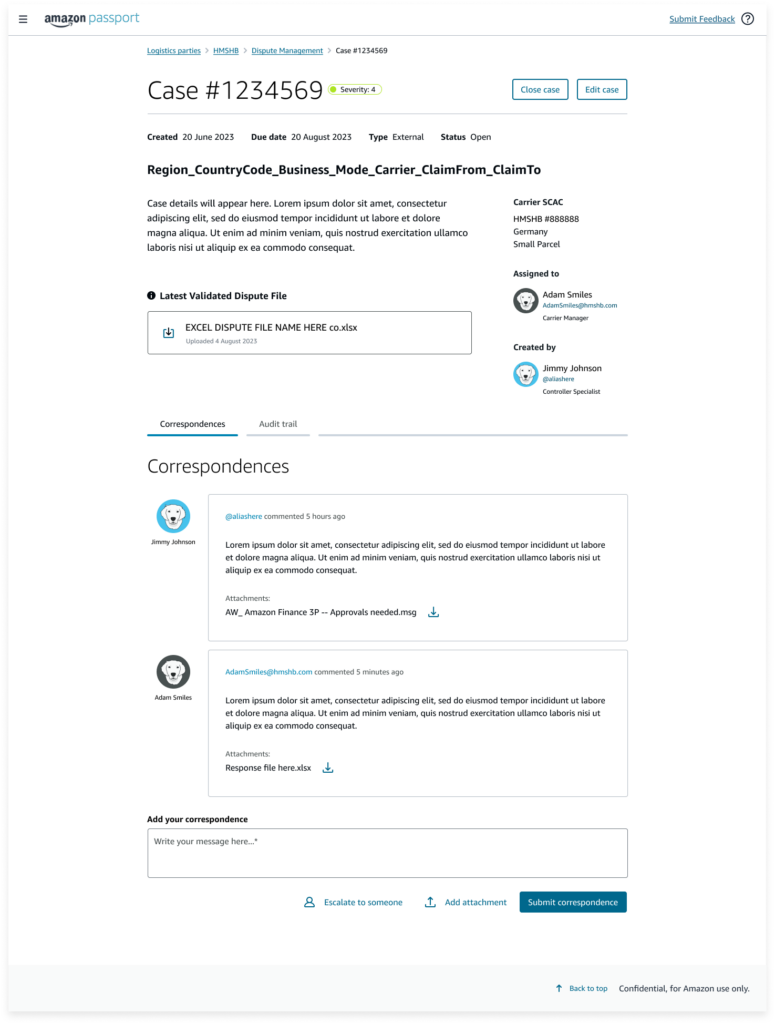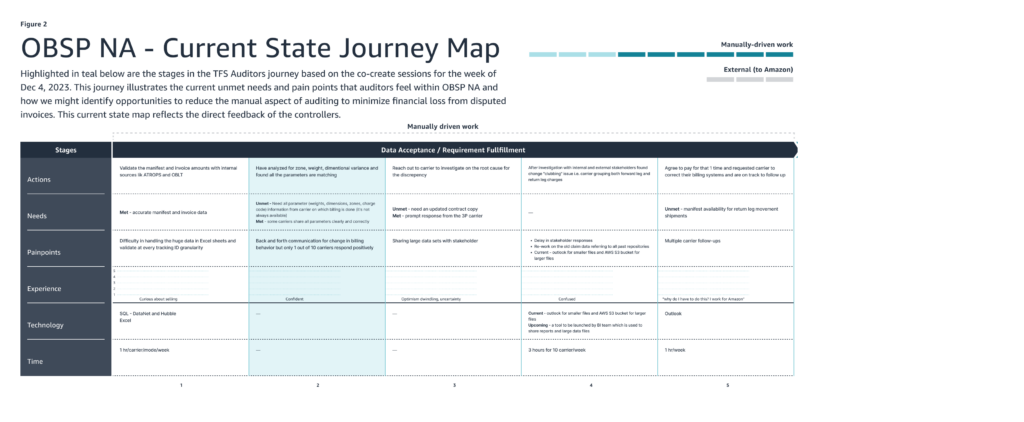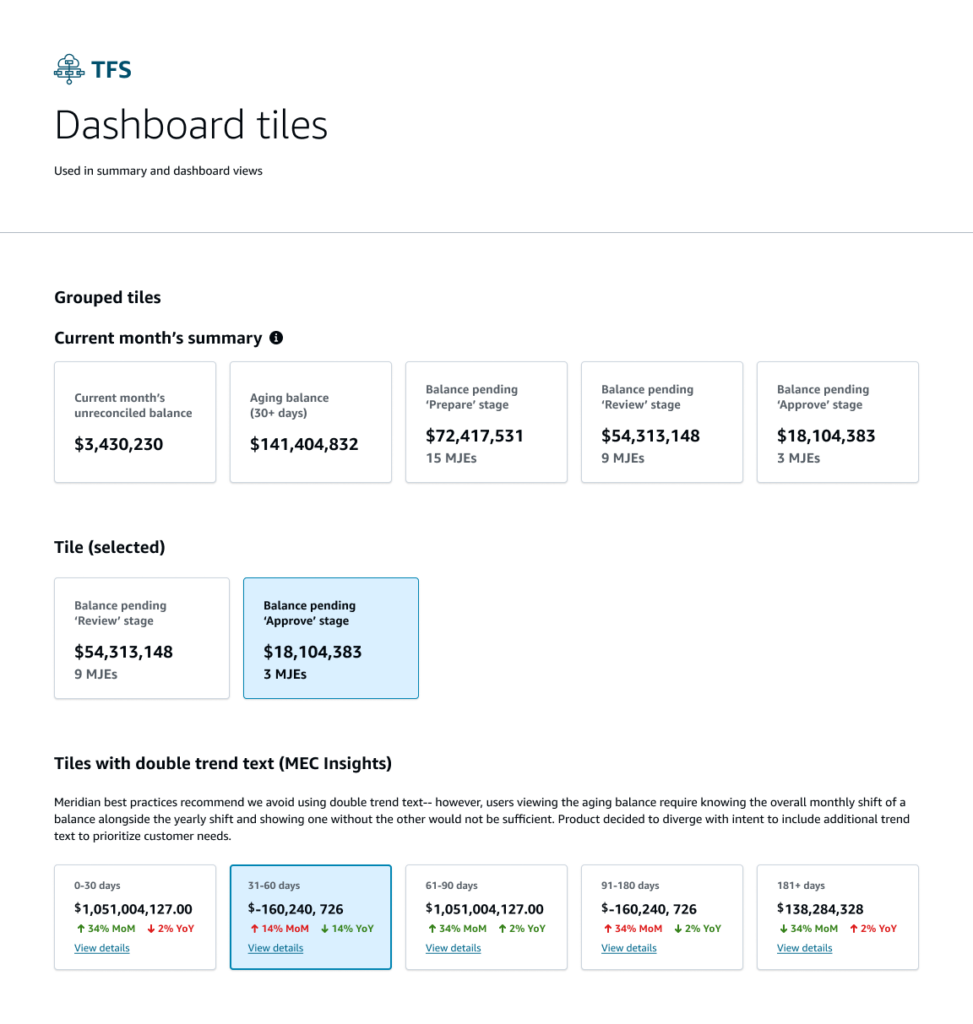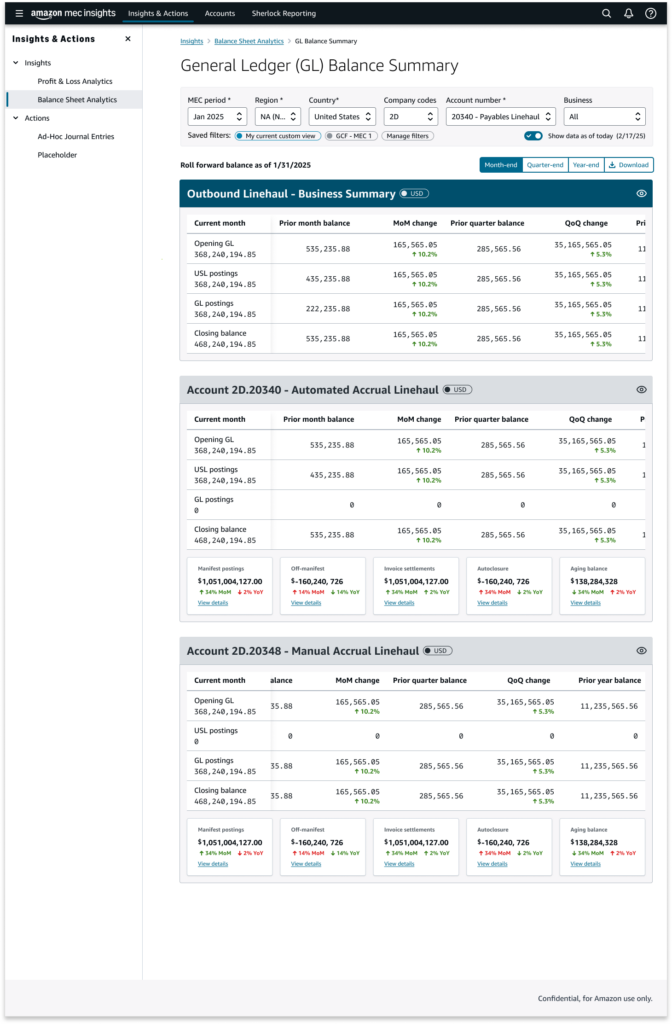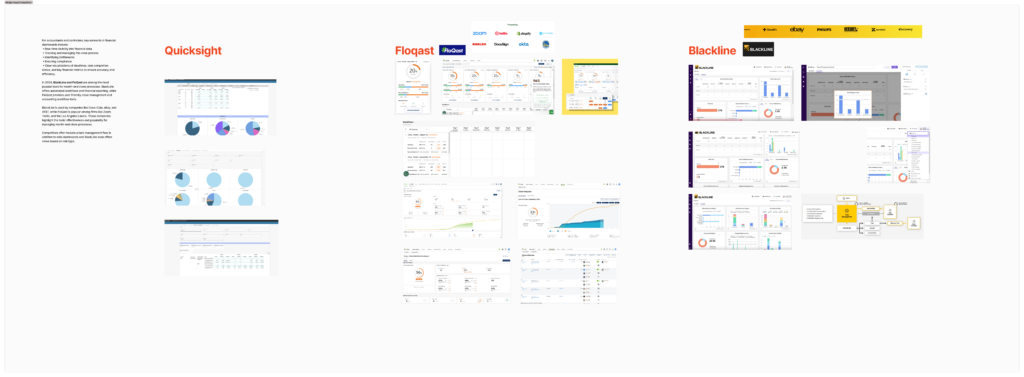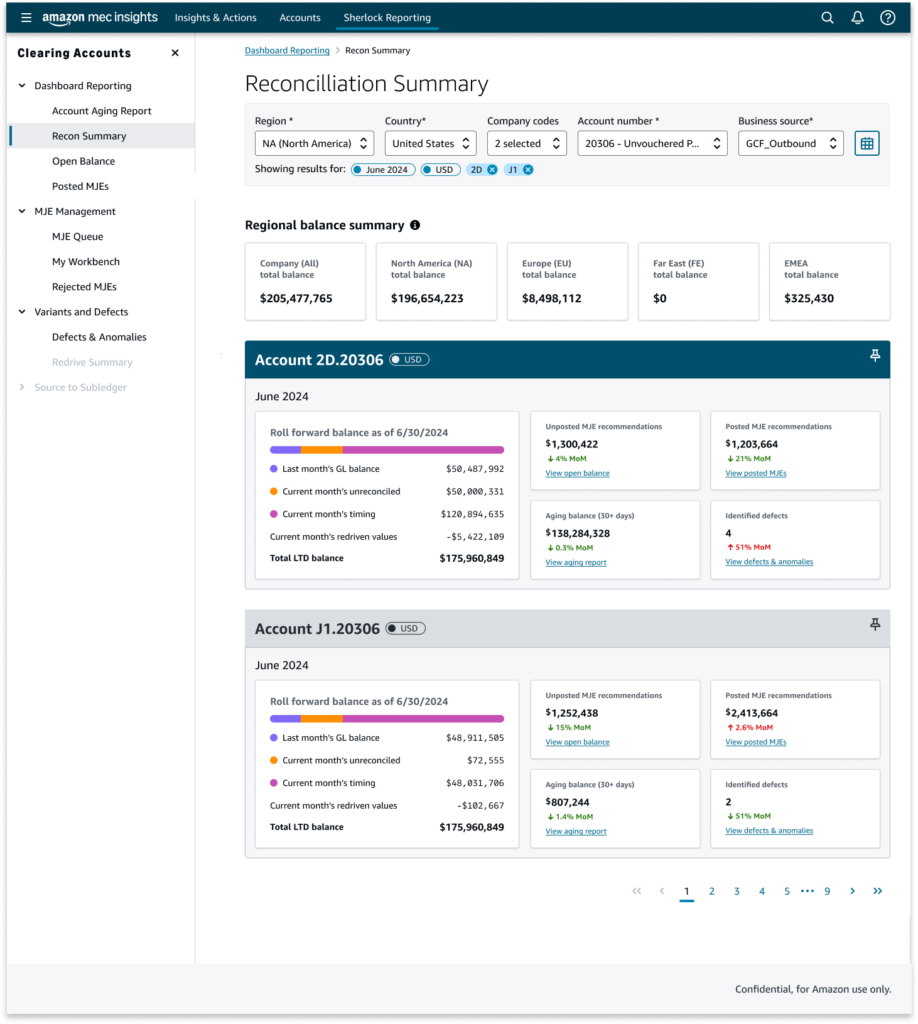A Deeper Look into ‘Sherlock Reporting’ and Pioneering First-of-Kind Financial Tools for Amazon Transportation
Amazon’s Transportation Financial Systems (TFS) handled an unprecedented volume of global transportation transactions, with no existing tools capable of managing this scale. As the first and sole UX designer for TFS, I faced the dual challenge of rapidly developing financial domain expertise while creating entirely new solutions for processing billions in transportation costs. Starting with minimal financial background, I quickly grasped complex accounting principles, transportation finance mechanisms, and regulatory requirements within my first year.
What I needed to do at a high level
- Rapidly build deep financial acumen to effectively collaborate with principal product managers and finance leaders
- Pioneer first-ever machine-learning systems for managing Amazon’s massive-scale transportation financial data to ultimately shorten the manual efforts of Month End Close (MEC)
- Design solutions to handle transaction volumes exceeding traditional financial tools’ capabilities
- Create new frameworks for MEC processes where no precedent existed
- Build scalable solutions from ground zero for monitoring and managing system errors
What was my part?
Within my first year, I navigated the complex landscape of transportation finance, rapidly mastering concepts like Month-End Close procedures and audit requirements while thriving in an environment with loosely defined parameters. This adaptive learning approach enabled me to architect ‘Sherlock Reporting,’ a revolutionary ML-powered system that transformed how Amazon handles clearing accounts and reconciliation at scale.
Starting with only a basic understanding of clearing accounts—temporary holders for revenue and expenses pending allocation—I collaborated with ML engineers to design intelligent systems that could process millions of daily transactions. Sherlock leverages machine learning to automate anomaly detection, predict potential reconciliation issues, and suggest corrective actions, significantly reducing manual effort in account management. By embracing ambiguity as an opportunity for innovation, I created adaptive data visualization patterns and intelligent filtering systems that evolve with usage patterns.
Through strategic analysis of existing solutions’ limitations, I identified critical gaps in handling Amazon’s unprecedented transaction volume and complexity. This insight drove the development of novel approaches specifically designed for massive-scale financial operations. I translated intricate financial requirements into intuitive user experiences, creating new paradigms for managing high-volume transportation finance workflows. The solution integrates seamlessly with TFS TransAccounting Service (TAS) for USL postings, using ML algorithms to streamline the posting process and automatically generate supporting documentation.
This synthesis of user-centered design, machine learning capabilities, and deep financial understanding resulted in a first-of-its-kind solution that not only automated complex financial workflows but also provided predictive insights for proactive account management. My ability to quickly adapt to this new domain while incorporating cutting-edge technology demonstrates my capacity to drive innovation in ambiguous, complex environments at unprecedented scale.
The results
Quantitative impact
- Built the first automated solution to shortening MEC reducing manual effort by 100 hours/month
- Achieved 30% adoption rate for completely new systems
- Created first scalable solution for handling TFS’s unique transaction volume
Organizational Impact
- Established new standards for transportation financial tools
- Demonstrated ability to rapidly master complex domains while delivering innovative solutions
- Created foundational patterns now used across multiple TFS products
- Set new benchmarks for handling high-volume transportation financial data
This pioneering work, achieved through rapid acquisition of financial expertise, not only solved immediate challenges but established entirely new paradigms for managing transportation financial systems at scale.
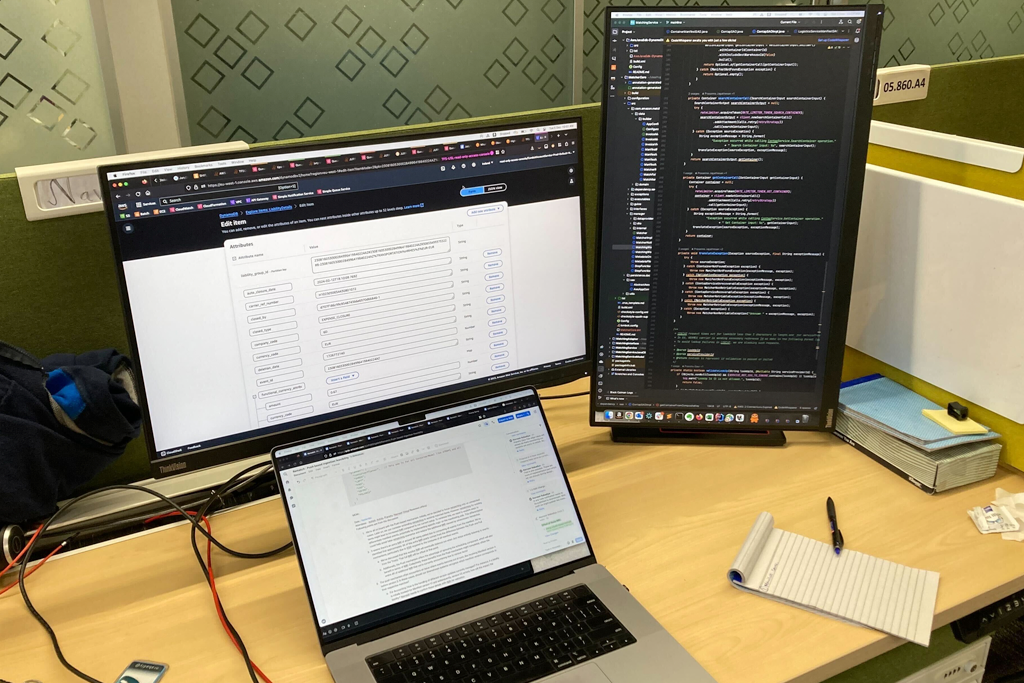
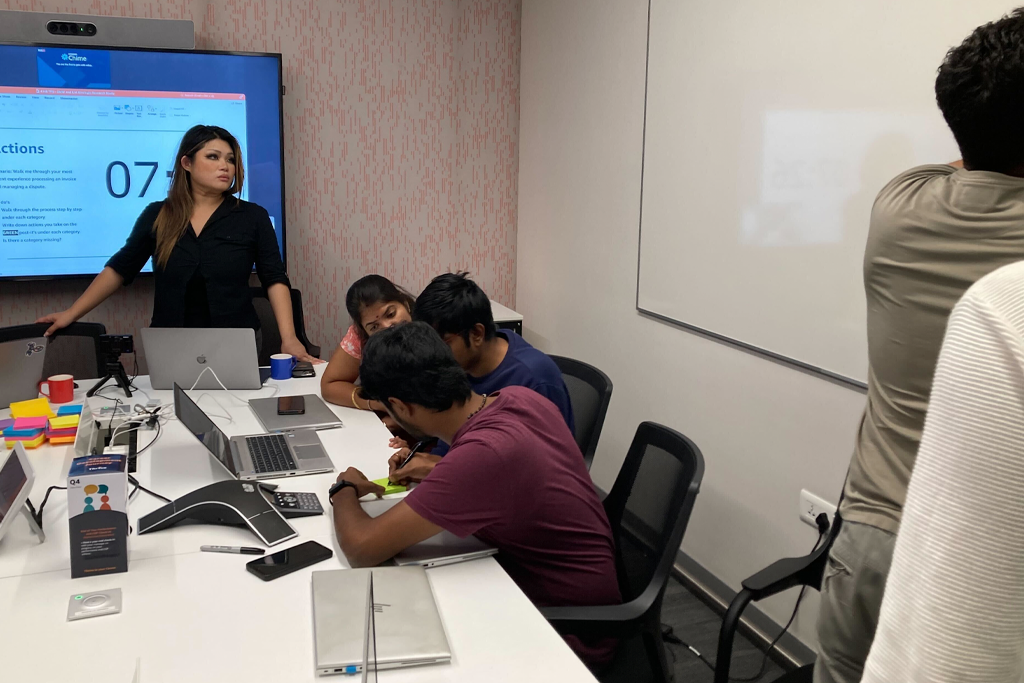
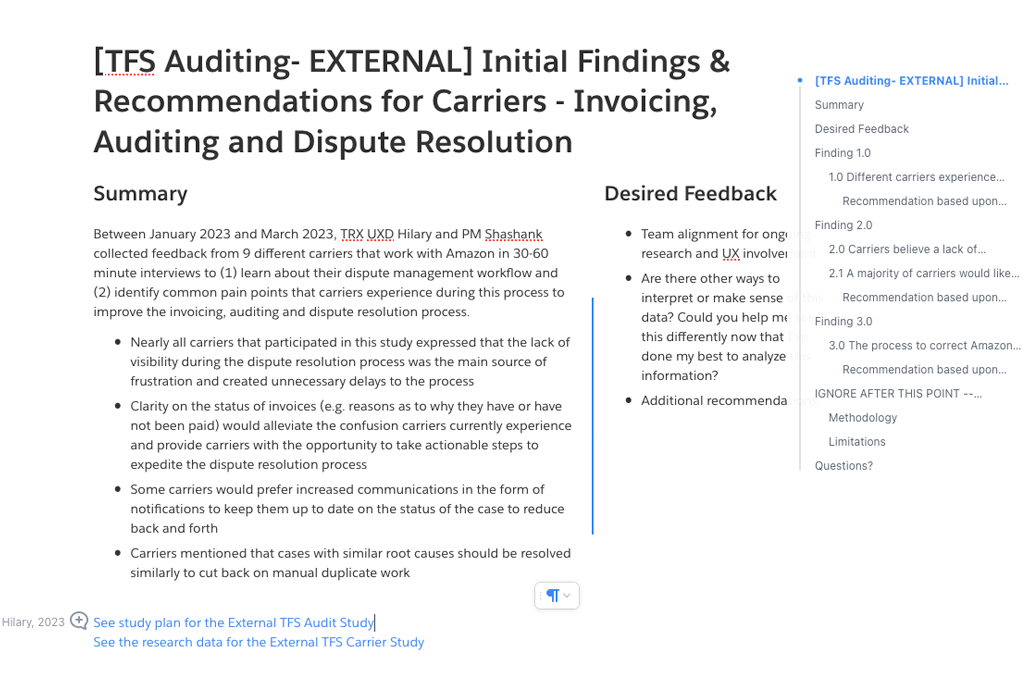
Telling the Customer Story Through UX Artifacts
Close relationships and frequent user communications set a base foundation for the Customer Experience Outcome Framework, which gave me a foundational understanding of our customers’ core needs and served as guiding principles to what our products and designs should accomplish.
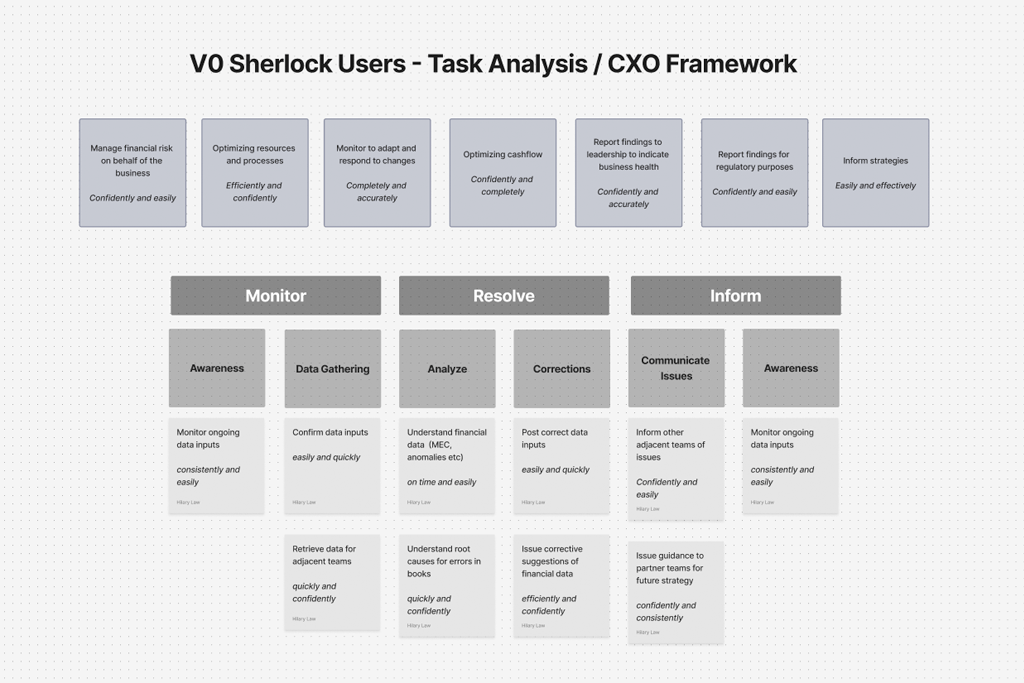
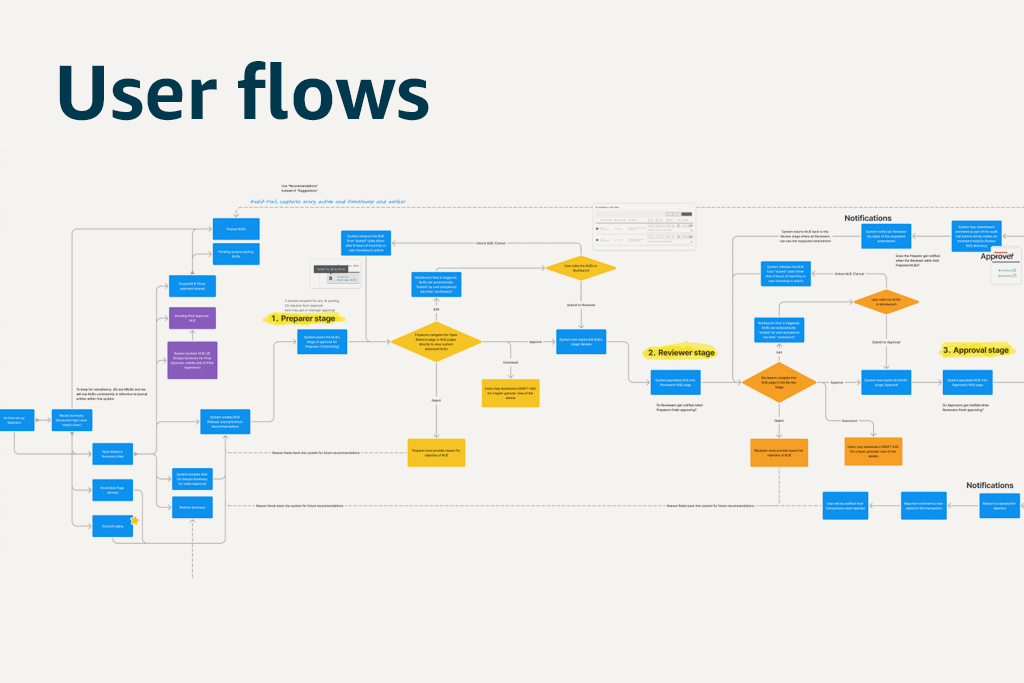
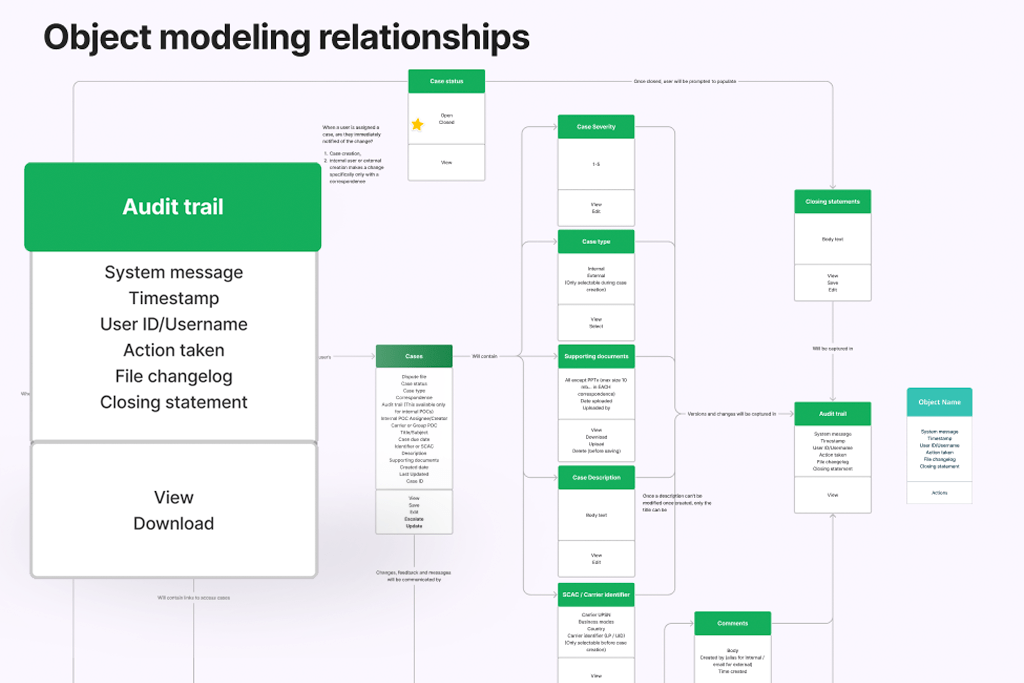
Design Iterations and Prototyping for Auditing and Accounting
Transportation Financial Systems handles cost allocations, invoice estimate processing, invoicing, payments, auditing and accounting. Each of the aforementioned services contain their own suite of products and unique workflows that make up the fiscal ecosystem behind transportation costs within Amazon. A majority of the TFS services support regulatory compliance requirements, process automation necessary to scale a business operation, and cost savings opportunities… and most lack a user-facing interface. Of the specialized services within TFS, Auditing and Accounting took precedence for UX priority and the snapshots below are reflective of that.
